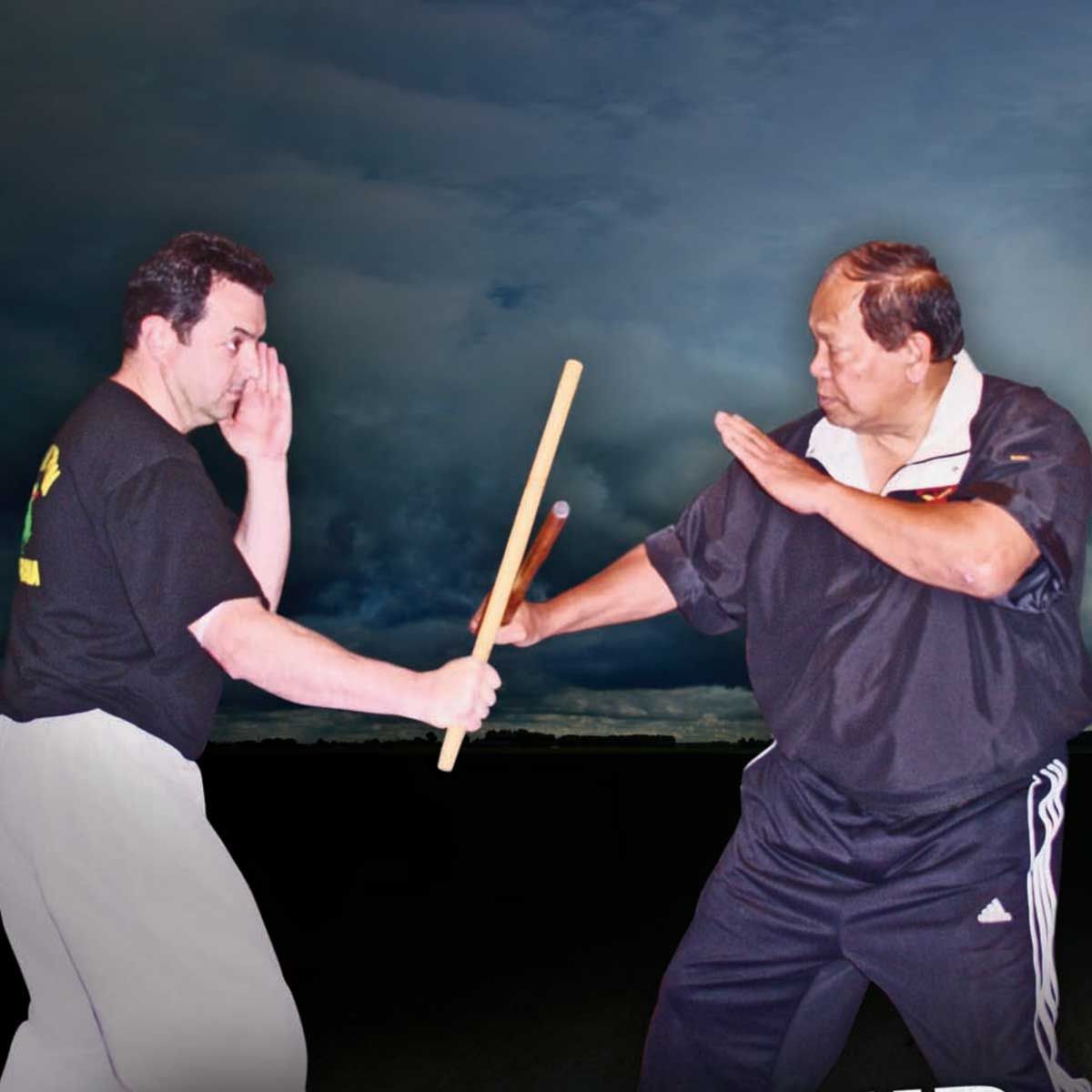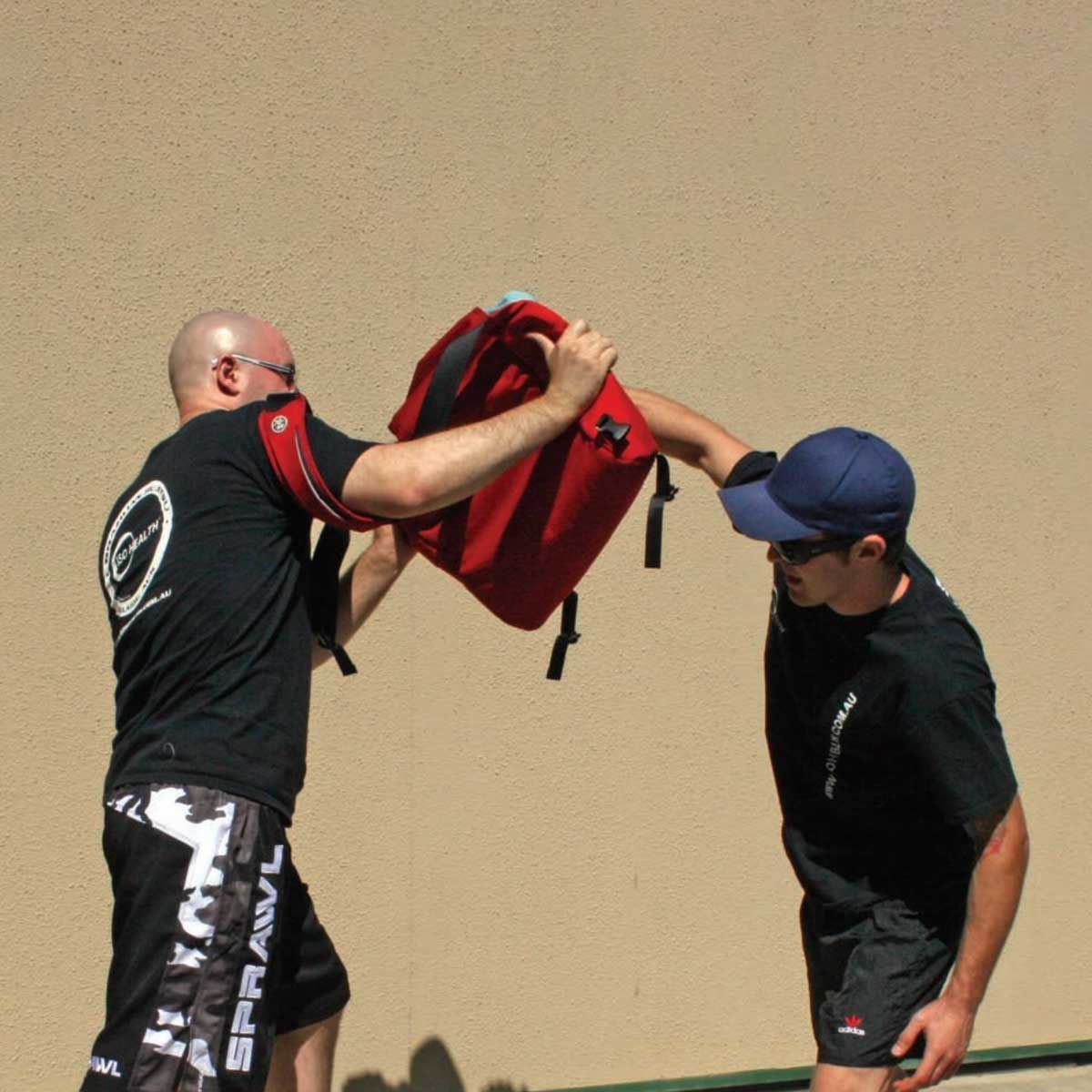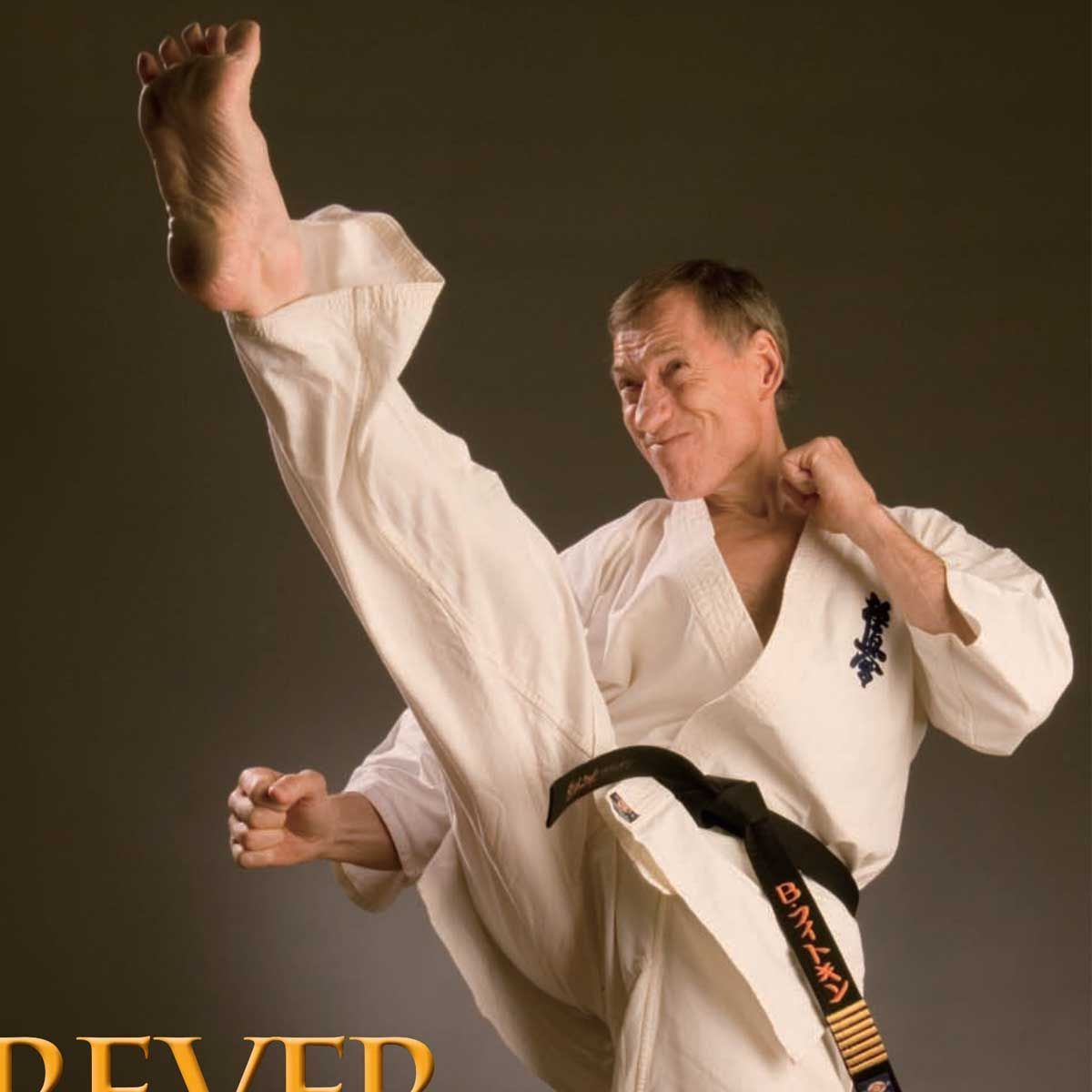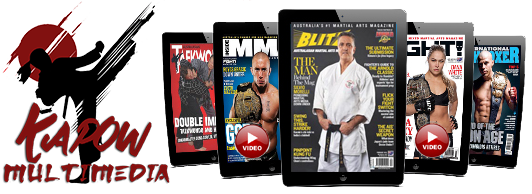STEEL ABS, NO SIT-UPS - Pavel Tsatsouline
To build the kind of natural body armour you need for martial arts — or abs of steel, if you will — you don’t need sit-ups or crunches.
BY PAVEL TSATSOULINE
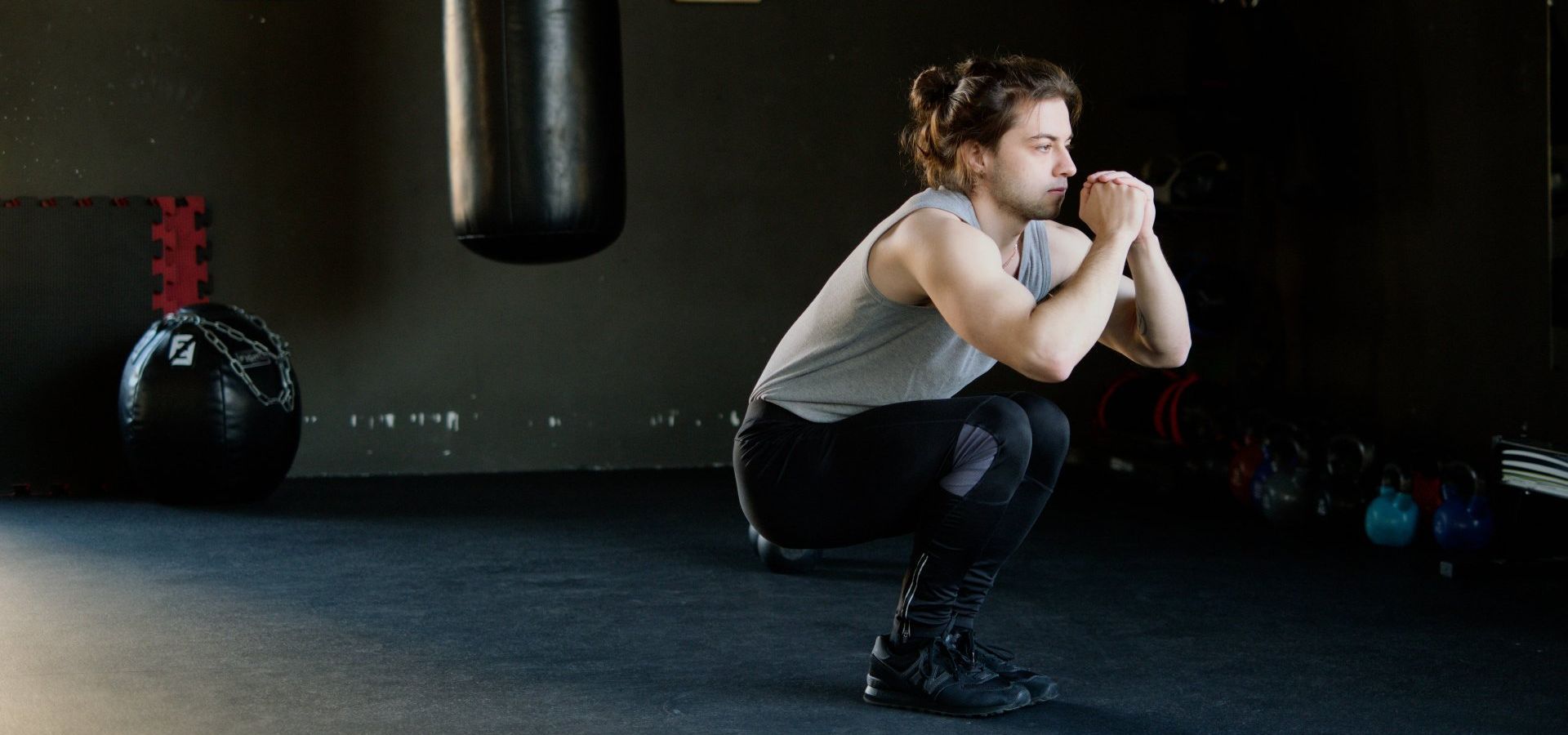
No, this is not your father’s ab routine! It could be your great-grandfather’s though. The tough old bird never heard of sit-ups or crunches, yet was solid as a rock. His secret was old-fashioned heavy labour, logging or hefting a side of beef. No, you do not need to take on a rural second job to shred your six-pack — all you have to do is practice at least one of the five full-body exercises outlined in this two-part article.
BELTLESS HALF SQUAT
Many Russian experts, as well as cutting-edge Western scientists such as Dr Mel Siff, insist that nothing beats heavy, full-body efforts such as deadlifts, clean-and-presses, etc. for building concrete midsections. Hardcore iron athletes agree. Steve Justa, the colorful author of Rock, Iron, Steel: The Book of Strength, favours heavy, high-rep half squats for bullet-proofing his torso. Justa reasons that the legs are the weak link in the full squats; in heavy partial squats, the load is evenly distributed between all the major muscles, including those of the trunk. The Nebraska strongman half-squats for three-to-four sets of 15 and 30 reps, with five minutes of rest in between. Load up a barbell inside a power rack.
Start with a weight not heavier than your full-squat 1RM (one rep maximum weight) and plan to build up to huge poundages in a few months. Set up safety pins a foot or so below your lockout point. The walkout is an essential part of the squat. Wedge yourself under the bar, inhale, tense every muscle in your body, and squeeze the bar off the hooks. Carefully back out while breathing shallow and keeping your waist rock hard and pressurized. Then squat! ‘Hard’ means braced for a punch, not sucking in or bulging out! Mel Siff PhD, the author of Facts and Fallacies of Fitness, explains: “The abdominal muscles statically resist the tendency of the abdomen to bulge excessively when the Valsalva (breath-holding) maneuver is used during heavy lifting… and this is how they play a major role in contributing to trunk stability and so-called ‘core strength’. They assist in maintaining the pressure in the abdominal cavity to serve as a type of pneumatic cushion or corset for the spine during lifting…” In other words, your abs are your ‘virtual belt’ to protect your back.
Powerlifting guru Louie Simmons once correctly pointed out that bodybuilders suck their stomachs in when squatting and hurt their backs all the time as a result. Don’t! Every muscle contracts in a straight line. In the abdominals’ case, the straight line is drawn between your breast and pubic bones. So do not suck your stomach in, but instead form a flat wall. “In fact, the more strongly your abdominals are pulled in, the less stable your trunk can be during lifting,” continues Dr Siff, “so, if you are lifting any serious loads, you would be well advised to allow your body to do what it does naturally when it has to stabilize itself under any large or sudden loading — and that is to hold breath briefly and allow the abs to tense or distend slightly, without any deliberate attempt to change anything during any dynamic movement. This is what the world’s strongest weightlifters have been doing safely and powerfully for many decades, so why not take a page out of the books of the world’s finest practical experts?”
FRONT SQUAT
The last comment by Dr Siff brings us to the reason why weightlifters — we are talking Olympic weightlifters here, not just anyone who lifts iron — have their ab act together. Their secret is the front squat and other lifts that require racking a heavy barbell in front. The way we are built, the spinal erectors are simply unable to stabilize the spine when a heavy weight is supported in front. When a friend of mine, a powerlifter with a 700-pound squat, power-cleaned 225 pounds for the first time he felt like ‘his upper abs were going to explode’. What he was experiencing was the downward pressure of the parachute-shaped diaphragm muscle that separates the lungs and the stomach. The diaphragm was pushing down like a hydraulic lift to build up the pressure in the abdomen and to prevent the spine from collapsing forward. And the abs, as explained earlier, were containing the guts from spilling and getting the mother of all workouts. Front-squatting quickly teaches one to pressurize the abdomen the hard way. All you have to do is to remember that ‘gut feeling’ and apply this elite skill to other lifts for greater strength, a well protected back, and a killer ab workout. To state the obvious, start front-squatting to rock bottom, for many sets of one, two, or three reps. Without expanding on this question as it would take us on a tangent, partial front squats as well as high-rep front squats are against the Party line.
BELTLESS HALF DEADLIFT
There is a good reason Masters World Powerlifting Champion Marty Gallagher calls the deadlift ‘the reverse sit-up’. The deadlift ranks among the best midsection exercises. It operates on the same principle as the squat: the abs get a workout by containing the intra-abdominal pressure from a heavy poundage. As with the back squat, limiting the range of motion will increase the stress on the midsection. Set up your barbell inside the power rack at your knee level. About three quarters of your maximum deadlift from the floor will be a good starting weight. Expect your poundage to skyrocket within weeks; then you will have to strap yourself in. Yes, I am letting you cheat with straps because otherwise you will not be able to hold on to your pull for reps. Don’t get used to it. Take a breath into your stomach, pull up your butt, pressurize, brace your whole body, and pull. Do not arch your back but keep it flat; this encourages a better ab contraction. Also keep your weight evenly distributed on your feet rather than towards your heels as usual. Push your feet straight through the platform and drive hard with your glutes. Pick up a rhythm and knock off your reps. Lower the bell quickly but precisely; don’t round your back or rock on your toes, and push your butt back on the way down.
It is critical to your survival that you do not lose your air during this lift, so breathe shallow and keep a bubble in your belly at all times! With both deadlifts and squats you should hardly feel your back but be very aware of your tense abs and obliques. Don’t suck them in; don’t push them out. Build a flat wall against the internal pressure. And be aware that this type of exercise is not for people with hypertension or heart problems. Abdominal power to you! □
Pavel Tsatsouline is a former Soviet Special Forces physical training instructor, now a subject matter expert to the US Secret Service, Marine Corps and Navy SEALs. He’s also the author of your abs’ worst nightmare, the Bullet-Proof Abs book. This and Pavel’s many other books & DVDs are available from www. dragondooraustralia.com
Blitz Martial Arts Magazine, FEBRUARY 2010 VOL. 24 ISSUE 02







